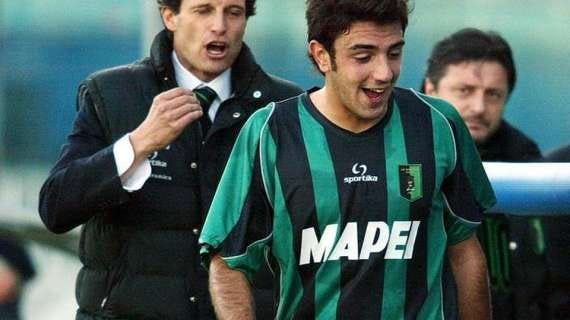Calcio Moderno
Stefano Pioli’s Milan, from a bird’s eye view, have ran riot in their first two matches. They’ve managed to stomp both of their opponents, Bologna and Torino, with seemingly relative ease. New signings like Christian Pulisic and Tijjani Reijnders made instant goal contributions, and main striker Olivier Giroud already has three goals to his name.
Of course, if you zoom in a bit, things wouldn’t look quite as clear cut as this. But this isn’t the part of the season for rational analysis. This is the part where instant conclusions are made and hasty predictions are finalized.
A more sobering look would say that while Milan may have started well, they haven’t been nearly as dominant as portrayed. Against Bologna, they may have went two up quickly, but they actually would’ve conceded in the first minute of the match had Charalampos Lykogiannis’ shot not hit the post. Bologna, for big parts of the match, dominated possession and threatened to score themselves.
And while Milan were clearly stronger than Torino, the 4-1 scoreline included two penalties. Milan’s non-penalty expected goals stood at a mere 1.46, which means the big scoreline should be taken with a pinch of salt.
It is clear what Pioli is trying to do. Calcio moderno, in his own words, is the aim. That, to him, means building up with goalkeeper Mike Maignan (60 passes completed against Torino) and the center back duo, the fullbacks tucking in midfield, and recycling possession in their own half until an opening comes up.
When that happens, Milan attempt to break through, utilizing the pace of Rafael Leão, Theo Hernández, and Pulisic. Striker Giroud is great with link ups, and new midfield additions Reijnders and Ruben Loftus-Cheek are both very dynamic; while Reijnders is more offensive minded, Loftus-Cheek is comfortable sitting back and assessing risks, alongside the tactically astute Rade Krunić.
Milan’s idea is quite simple. Control the match by controlling possession in their own half, inviting the press, and attacking with bursts of pace once the opportunity presents itself. But they are yet to face stronger teams that trouble their build up with their press, or teams that manage to catch their adventurous positioning and one on one pressing with direct transitions. And what will they do against teams happy to sit back and leave them with possession in their own half? Plenty of questions remain unanswered.
Another team attempting their own version of ‘calcio moderno’ — this time in star forward Federico Chiesa’s words — are Juventus. After two turbulent seasons that were messy on the pitch as much as off it, Massimiliano Allegri returned from his summer vacation with a different outlook.
Out with ‘corto muso’ (literally: winning by a nose — a phrase that was added to the Italian dictionary thanks to Allegri), and in with high pressing and more intensity. Francesco Magnanelli, Sassuolo’s all-time record appearance holder, was a new staff addition over the summer. Turin daily sportspaper, Tuttosport, wrote a couple of features on his influence already, and players like Chiesa and Carlo Pinsoglio namechecked his contribution.
Even Allegri himself, before the Bologna match, alluded to the change in direction.
The new Juventus attempts to press higher up the pitch, starting from Dušan Vlahović and Chiesa, and force opposition errors. It was no coincidence that in Juve’s opening match demolition of Udinese, their first goal arrived from a pressing sequence just two minutes on the clock. The first half finished 3-0. It was job done in 45 minutes.
But while it was understandable for their tempo to drop in the second half against Udinese, it was a lot less so on their first home match of the season, against Bologna. It was Thiago Motta’s Bologna who, in fact, played calcio moderno. They bypassed Juve’s press with their swift passing, and took advantage of Juve’s lack of defensive organization to deservedly take the lead.
In possession, Juve’s version of calcio moderno means building up with Danilo Luiz and Gleison Bremer, while the third center back, Alex Sandro, stretches wide.
The right wing back, Timothy Weah, stays wide and overlaps on the right. While the left wing back, Andrea Cambiaso or Samuel Iling-Junior, tucks inside in midfield. Sometimes, they switch roles. And at other times, both tuck inside, or both stay wide. It includes a lot of variations, but the idea remains to give passing options both in the middle and out wide.
While it worked better against Udinese, Juve’s attacking strategy also worked against Bologna. Bologna’s midfield largely stifled Juve’s, but on the flanks Juventus remained dangerous. Weah was always a threat on the right, and Iling-Junior assisted Juve’s equalizer through a perfectly weighed cross on Vlahović’s head.
It was out of possession where Juve struggled. The three center backs all seemed confused who to pick up, sometimes all three of them marking Bologna’s lone striker, Joshua Zirkzee. His quick feet and great link ups opened up spaces that were supposed to be occupied by Manuel Locatelli, but weren’t. Bologna repeatedly took advantage of that and that’s how they scored their goal.
The idea that Juve went from great against Udinese to horrible against Bologna in the span of one week is one fitting with August analysis, but it’s just not true. Juve’s new mechanisms will take time and it wouldn’t be reasonable to expect fireworks straight away, but the seeds are clearly there.
While both Milan and Juve started the season with their own version of calcio moderno, it remains to be seen whether it will reap rewards long term or not. But for now, it may be wise to just observe the process and not jump straight to conclusions.





